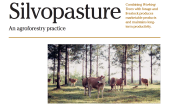Great information! Thanks for sharing.
The USDA also has a very cool National Clonal Germplasm Repository program with 3 sites in the USA. This has got to be some of the most important work that the USDA has done to support food security. Each repository is a large ag station that houses an incredible diversity of fruit cultivars for propagation. This government funded program supplies scion wood to anyone who orders it. This is by far the best thing I have ever heard of my tax money going to support. I wish we could increase their funding by at-least an order of magnitude.
I was blessed with the opportunity to visit the Cornell Ag station in Geneva, NY (one of the 3 USDA Repository sites) and got a tour from the manager. While it was by no means permaculture it is still one of the most beautiful things I have ever seen. 30 acres of different cultivars of apples, literally just one of each cultivar for 30 acres. While it is managed as an orchard (lawns, irrigation, etc etc) it was so beautiful to see the clearly visible genetic diversity on the site. It was fall, some trees were already in dormancy, some still had apples, and some still had apples and leaves. Each tree was unique, even though they were all pruned and managed the same way.
That's all a long winded route to say that I think every permie with some room for grafting/propagation should buy some appropriate root stock and start filling their order from the appropriate repository every year. Each repository is for a different climate and houses different species. A brief synopses below.
USDA Repository Geneva, New York | Apples, Tart Cherries, and Cold-Hardy Grapes
USDA Repository Corvallis, Oregon | Pears, Small Fruits, and Unusual Fruits
USDA Repository Davis, California | Stone Fruit, Grapes, Nuts, and Unusual Fruits


 2
2




 4
4




 1
1

















 1
1





















